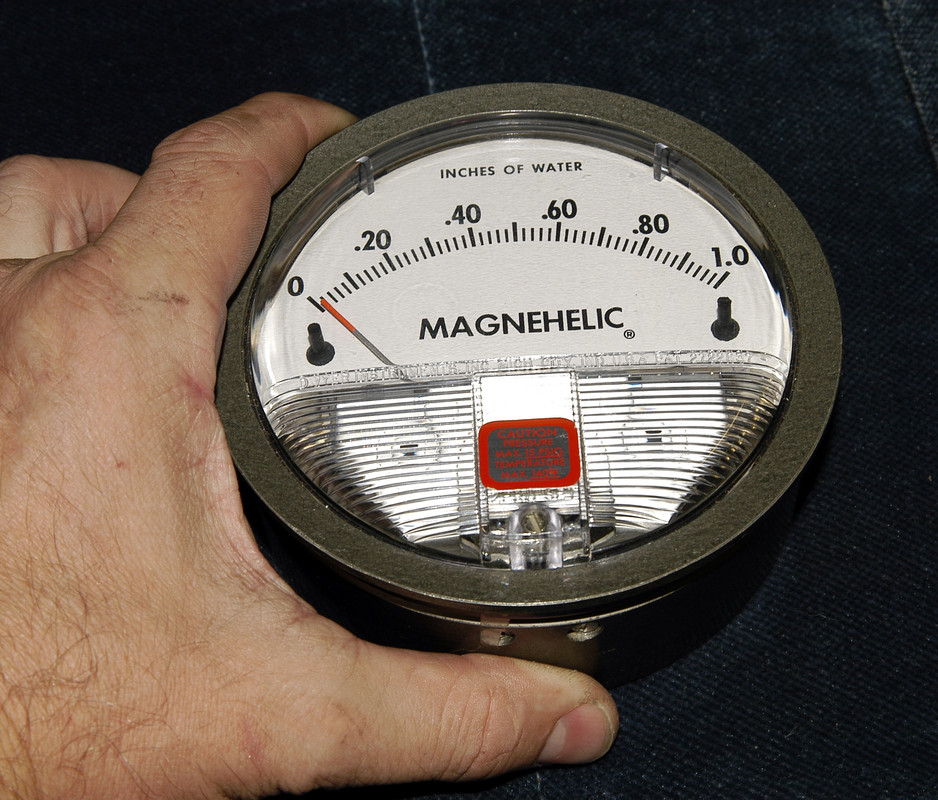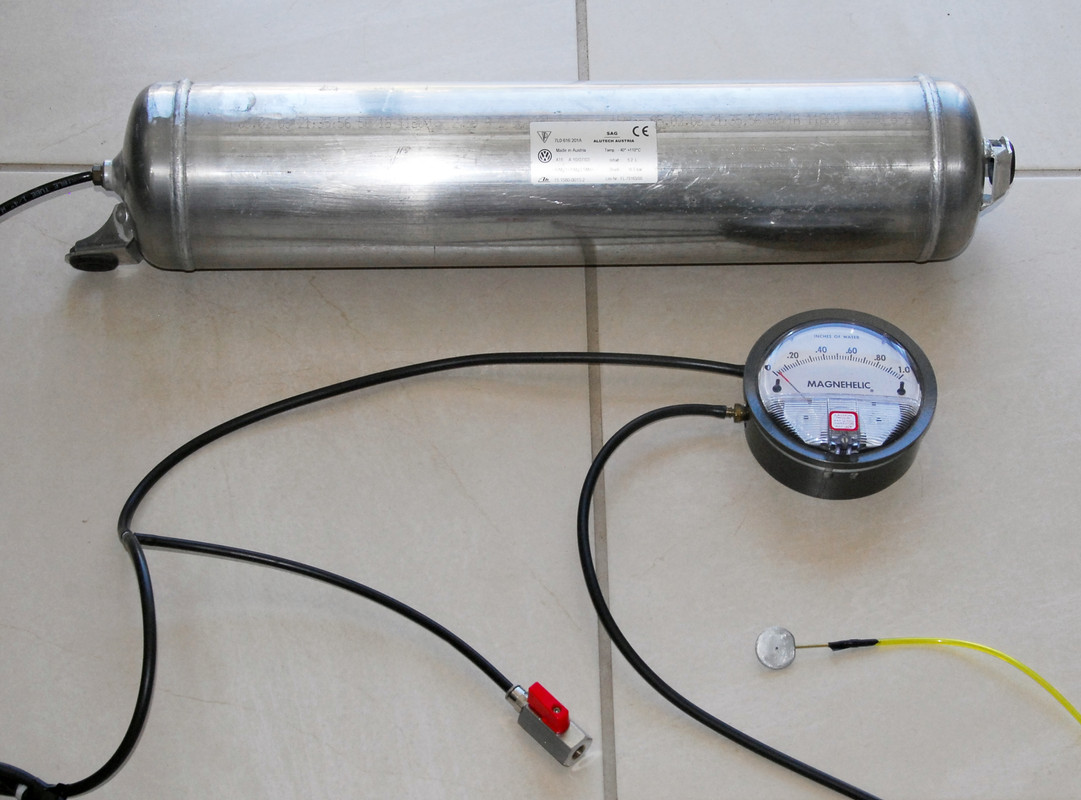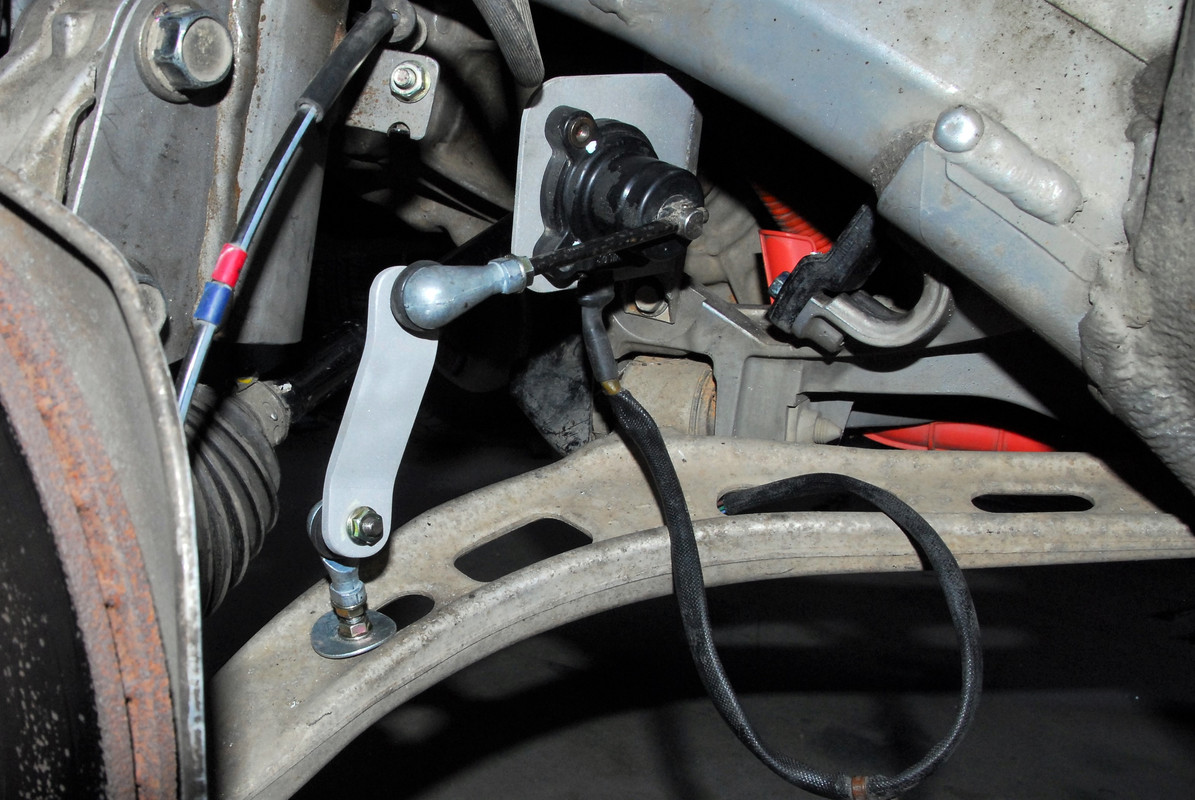Rather like when air/fuel ratio meters and knock sensing equipment became widely available and so transformed DIY engine tuning, the use of on-road aero measurement means you no longer have to guess - instead you can see for yourself what is happening. And the measurements are all made in an absolutely real world environment.
Wool tufts - see flow behaviour.

Example uses: Find areas of separated and attached flow, ascertain flow directions, see changed flow behaviour caused by modifications.
Equipment: yarn, scissors, tape, camera.
Complexity: easy to do, but interpretation of results requires some knowledge
Comment: still the easiest and best
Cost: $5 (if you have camera)
Coarse pressure measurement - measure large aerodynamic pressures.

Example uses: find best location of hood vents, measure pressure differentials across heat exchangers.
Equipment: Magnehelic gauge, hose, tape.
Complexity: easy to do and interpretation of results also fairly easy
Comment: good entry into world of aero pressure testing
Cost: $50 (secondhand gauge)
Surface pressure measurement - measure pressures on panels above and below the car, both negative and positive.

Example uses: directly measure pressures causing lift/downforce, see changed pressures resulting from modifications like spoilers and air dams, measure wake pressures.
Equipment: Magnehelic gauge, surface pressure puck, sealed vessel, ball valve, hose.
Complexity: needs far more care than when doing coarse pressure testing. Interpretation of results fairly easy
Comment: brilliant window into seeing what is actually causing thrust/drag, lift/downforce
Cost: $100-200.
Throttle stop testing - directly measure changes in total drag over about 2 per cent.

Example uses: measure drag change results of modifications
Equipment: digital speed measurement, display of actual throttle blade opening.
Complexity: needs care in testing procedure, interpretation of results easy
Comment: much better than coastdown testing but probably won't work on cars with CVT or electronic throttles
Cost: depends on what needs to be purchased - $0 - 100
Lift / downforce measurement - directly measure amount of lift or downforce

Example uses: see how much lift is occurring, measure effectiveness of modifications, calculate coefficient of lift (front, rear)
Equipment: ride height sensors (eg from an air suspension car), regulated 5V supply, electronic means of averaging output value
Complexity: fitting sensors can be tricky, some basic knowledge of electronics needed, results easy to interpret
Comment: once installed, can be accessed whenever data is needed. Accuracy will diminish with very stiff suspension cars.
Cost: $50-100
Eroding clay technique - see fine details of airflow

Example use: see attached / separated flow
Equipment: fine clay (eg fire clay), water spray bottle
Complexity: needs patience and care in application and testing, analysing results requires some knowledge
Comment: allows you to see very tiny details of flow
Cost: $20